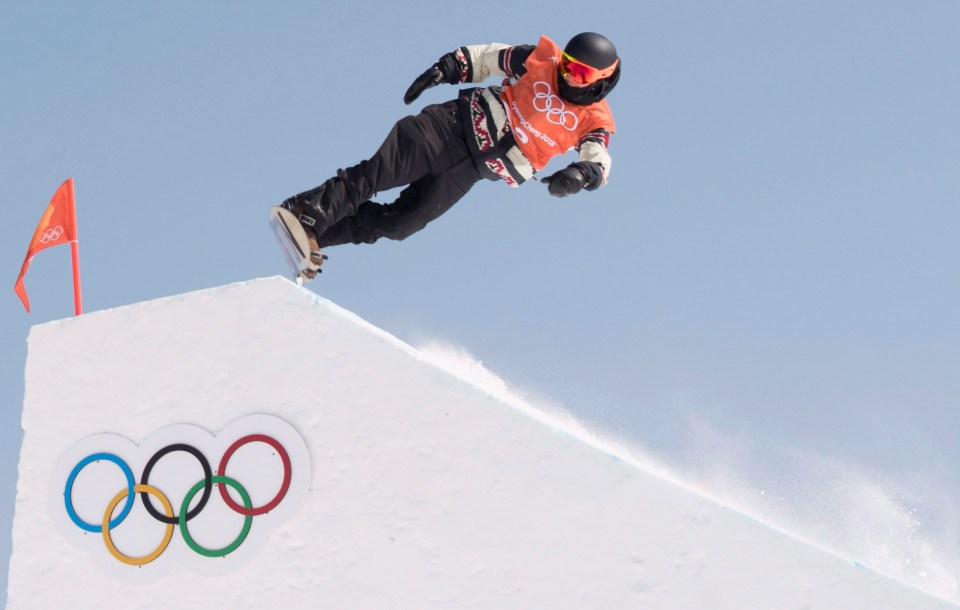What is the difference between alpine and freestyle skiing (and snowboard)?
With so many disciplines, following your favourite skiing and snowboard events can seem as tricky as pulling off Mark McMorris’ signature backside triple cork.
But have no fear, there’ll be no jumping through hoops (or off ramps) here. So, if you’ve ever caught yourself wondering, “What’s a mogul anyway?” stress no more – we’ve got you covered!
Skiing has been featured at the Olympic Winter Games in one form or another since 1924. Today the sport is broken down into six disciplines: alpine, freestyle, snowboard, cross-country, ski jumping, and Nordic combined.
What is alpine skiing?
Alpine skiing is divided into four major disciplines: slalom, giant slalom, super giant slalom (AKA super-G), and downhill. The first two are considered “technical” events, with the latter two dubbed as “speed” events. No matter the event, the goal is simply to get down the mountain course as fast as possible.
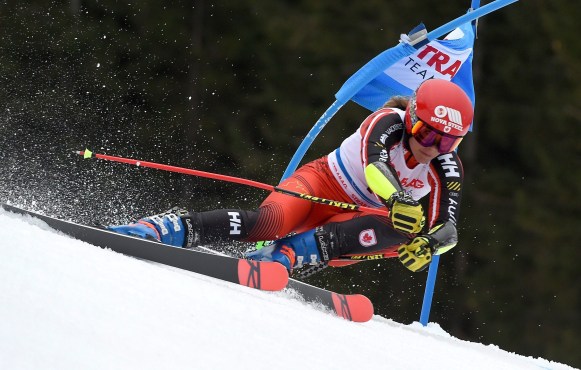
Canada’s Marie-Michele Gagnon competes in the first run of an alpine ski, women’s World Cup giant slalom, in Spindleruv Mlyn, Czech Republic, Friday, March. 8, 2019. (AP Photo/Marco Tacca)
Slalom has the shortest courses with the quickest turns and most gates for skiers to pass through. Men will zigzag their way through 55-75 gates while women navigate 45-60 gates placed relatively close together.
Giant slalom features slightly longer courses, meaning more potential for speed. You’ll see roughly the same number of gates as slalom, but instead of poles they use rectangular flags that are spaced a little further apart.
Did You Know?
A giant slalom event also exists in snowboard – with a twist. Snowboarders compete in parallel giant slalom, meaning that competitors race head-to-head on side-by-side, identical slopes.
In super-G we begin to see significantly more emphasis on speed and less on sharp turns. The hill is steeper and the distance between gates increases to a minimum of 25 metres.
Downhill is almost a pure speed event, featuring the longest courses and highest speeds in alpine skiing. In fact, athletes can reach up to 145 kilometres per hour on these courses – about as fast as an average NHL slap shot.
What is freestyle skiing?
Freestyle skiing could be considered the younger, flashier brother of alpine skiing. When you picture skiers making those majestic aerial jumps and tricks, you’re thinking of freestyle. But you’ll also find that there is significant crossover between freestyle skiing and snowboarding.
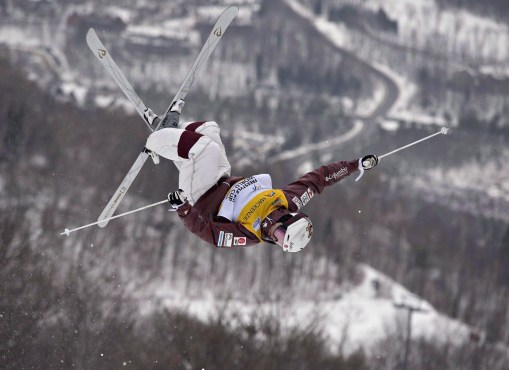
Team Canada’s Mikael Kingsbury of Deux-Montagnes Que. jumps in the moguls run at the freestyle ski world cup 2018 Saturday, January 20, 2018 in Mont-Tremblant Que. Kingsbury is among the Canadian athletes to watch heading into the Pyeongchang Olympics.THE CANADIAN PRESS/Jacques Boissinot
This discipline includes six events: moguls, aerials, slopestyle, halfpipe, big air and ski cross. Five of those events are judged, so there is an artistic and creative component not seen in alpine skiing.
Mogul, derived from the Bavarian word “mugel,” meaning mound, refers to the snowy bumps skiers navigate through on their way down a steep slope. In keeping with the creative theme of freestyle, competitors also complete two jumps off ramps where they perform aerial maneuvers.
Can you guess what the aerials event is all about? No, not an animated, rebellious 16-year-old mermaid that befriends a singing crab and falls in love with a prince (“A” for effort, though).
It actually features skiers going down a short slope before launching themselves off a ramp into the air where they perform the impressive aerial maneuvers, consisting of multiple flips and twists.
Did You Know?
Slopestyle, halfpipe and big air are also events in snowboard and are usually contested on the same courses as their freestyle counterparts.
Big air will be featured for the first time as an Olympic skiing event at Beijing 2022, though it was contested by snowboarders at PyeongChang 2018. While it may look like aerials on the surface, you’ll notice a few differences. For one, big air competitors use ski poles during competition while aerialists do not. And like their snowboarding counterparts, big air skiers emphasize creativity in their tricks. For instance, you would never see an aerialist start or end a jump facing backwards, whereas this is relatively common in big air.
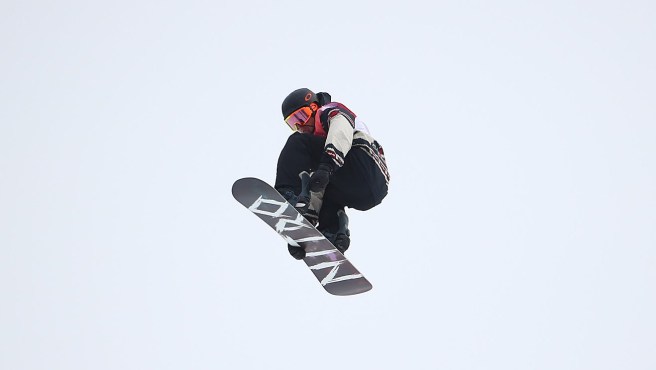
Sebastien Toutant of Canada wins Gold in the Men’s Big Air Finals at the Alpensia Ski Jumping Centre during the PyeongChang 2018 Olympic Winter Games in PyeongChang, South Korea on February 24, 2018. (Photo by Vaughn Ridley/COC)
In slopestyle, competitors work their way through a course filled with jumps, boxes, and rails, doing so with creativity and flair. Slopestyle courses are usually shared by both ski and snowboard athletes, with minor differences in some of the features.
In halfpipe, competitors enter a sloped semi-circle shaped structure of snow that gives the event its name. They launch themselves into the air as they alternate sides, performing tricks such as flips and twists.
Ski cross is the only freestyle event based solely on time rather than scoring. It features a group start as four skiers race down a course with various terrain features such as banks and jumps. The same event exists in snowboarding, called snowboard cross or SBX, featuring six competitors per heat instead of four.
What is Nordic skiing?
Cross-country skiing, ski jumping, and Nordic combined all developed in Scandinavia and are often grouped together under the umbrella term Nordic skiing.
Cross-country skiing is the oldest form of the sport, deriving from the basic need to get around the snowy Scandinavian landscape. Competitors traverse long, relatively flat courses, with up to 55 skiers racing simultaneously.
In ski jumping, competitors aim to achieve the longest, most technically sound jump possible. Jumps are rated by judges based on distance, technique, and landing.
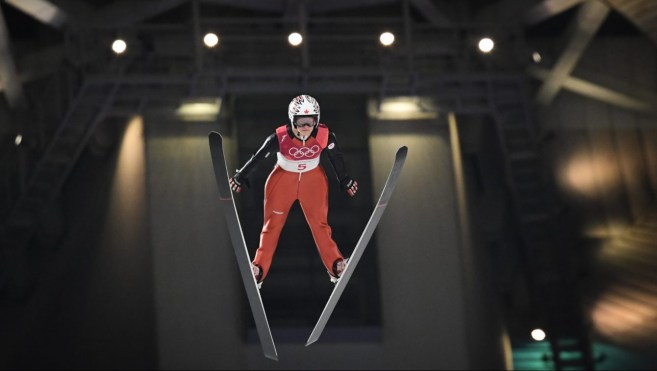
Taylor Henrich competes in women’s ski jumping at PyeongChang 2018 on February 12, 2018. (Photo by Vincent Ethier/COC)
Nordic combined is (no surprise) a combination of cross-country skiing and ski jumping. The individual event, known as the Gunderson, consists of one jump on either a small or large hill followed by a 10km cross-country race. Judges score the jumps, and those scores are used to determine the starting positions and intervals in the cross-country race.
Now that you’re all caught up on the different disciplines in skiing and snowboard, you’re ready to watch Team Canada dominate the slopes!

